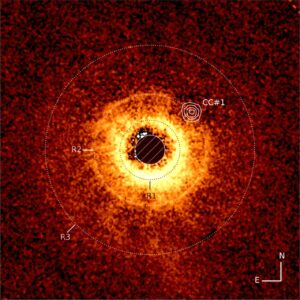
WASHINGTON (AP) — A U.S. intelligence report reveals that recent strikes on Iran’s nuclear facilities have set back its program by only a few months, challenging claims by President Donald Trump and Israeli Prime Minister Benjamin Netanyahu that the sites were “completely obliterated,” according to sources familiar with the assessment.
Breaking: Report Contradicts Official Statements
The Defense Intelligence Agency’s report, released on Monday, contradicts public statements by Trump and Netanyahu about the extent of the damage to Iran’s nuclear sites. The report, according to two individuals briefed on its findings, indicates that while the strikes on Fordo, Natanz, and Isfahan nuclear sites inflicted significant damage, the facilities were not entirely destroyed. These individuals spoke on condition of anonymity as they were not authorized to discuss the matter publicly.
Immediate Impact
The U.S. administration hopes to restart negotiations with Iran to dismantle its nuclear program entirely. However, experts express concern that the strikes, coupled with Iran’s potential to retain some nuclear capabilities, may push Tehran towards developing a functional nuclear weapon.
Key Fact: Iran’s centrifuges, essential for enriching uranium to weapons-grade levels, remain largely intact, according to the report.
Key Details Emerge
At the Fordo uranium enrichment plant, U.S. B-2 stealth bombers deployed several 30,000-pound bunker-buster bombs, causing the entrance to collapse and damaging infrastructure. However, the underground facilities were not destroyed, as indicated by the intelligence assessment. Intelligence officials had previously warned of such an outcome.
The White House Pushes Back
The White House dismissed the DIA assessment as “flat-out wrong.” President Trump defended his portrayal of the strike’s impact, stating, “It was obliteration, and you’ll see that,” during a NATO summit in the Netherlands. He characterized the intelligence as “very inconclusive” and criticized media outlets for their reporting.
“It’s treasonous so it ought to be investigated,” said Trump special envoy Steve Witkoff regarding the leak of the assessment.
Industry Response
Defense Secretary Pete Hegseth announced an investigation into the intelligence assessment leak, describing it as “preliminary” and “low confidence.” Secretary of State Marco Rubio criticized the leakers as “professional stabbers.”
The CIA and the Office of the Director of National Intelligence, which coordinates the work of 18 U.S. intelligence agencies, declined to comment on the assessment. The Israeli government has not released any official assessments regarding the U.S. strikes.
By the Numbers
Approximately 42 kilograms of 60% enriched uranium is theoretically enough to produce one atomic bomb if further enriched to 90%, according to the U.N. nuclear watchdog.
What Comes Next
Outside experts suspect that Iran may have already hidden core components of its nuclear program in anticipation of American bunker-buster bombs targeting its sites. Satellite imagery showing bulldozers and trucks at the Fordo site days before the strikes supports speculation that Iran could have moved its stockpile of enriched uranium to an undisclosed location.
Background Context
Iran maintains that its nuclear program is peaceful, yet it has enriched uranium beyond the levels necessary for civilian use. Prior to the strikes, U.S. assessments indicated that Iran’s leadership had not ordered the development of an operational nuclear weapon. However, the head of the International Atomic Energy Agency has warned that Iran possesses enough enriched uranium to produce several nuclear bombs if it chooses to do so.
Expert Analysis
Kelsey Davenport, director for nonproliferation policy at the Arms Control Association, noted that if Iran had already diverted its centrifuges, it could “build a covert enrichment facility with a small footprint and quickly enrich to weapons-grade levels.” Eric Brewer, a former U.S. intelligence analyst, suggested that Iran could have moved other equipment, including centrifuges, although transporting them without damage is challenging.
Regional Implications
Iran’s announcement of a third nuclear enrichment facility in Isfahan adds to concerns about its nuclear capabilities. The facility’s operational status remains unclear following strikes from both Israeli and American forces. Experts warn that despite the damage, Iran retains a solid foundation for a reconstituted covert program.
Timeline of Events
- June 12: Iran announces a new nuclear facility in Isfahan.
- June 13: Iran informs the U.N. of measures to protect nuclear equipment.
- June 19: Satellite imagery shows activity at Fordo site.
- June 22: U.S. conducts airstrikes on Iranian nuclear sites.
This report was first covered by CNN on Tuesday, highlighting the ongoing complexity and geopolitical tensions surrounding Iran’s nuclear ambitions.
—- The Associated Press receives support for nuclear security coverage from the Carnegie Corporation of New York and Outrider Foundation. The AP is solely responsible for all content. —- Additional AP coverage of the nuclear landscape: AP Nuclear Coverage





